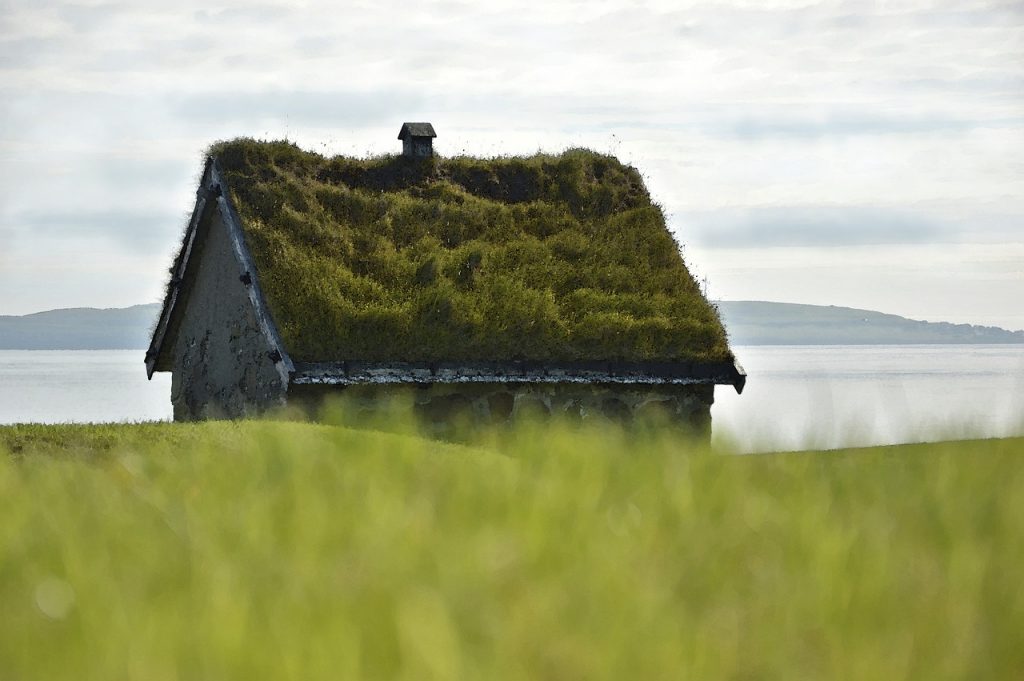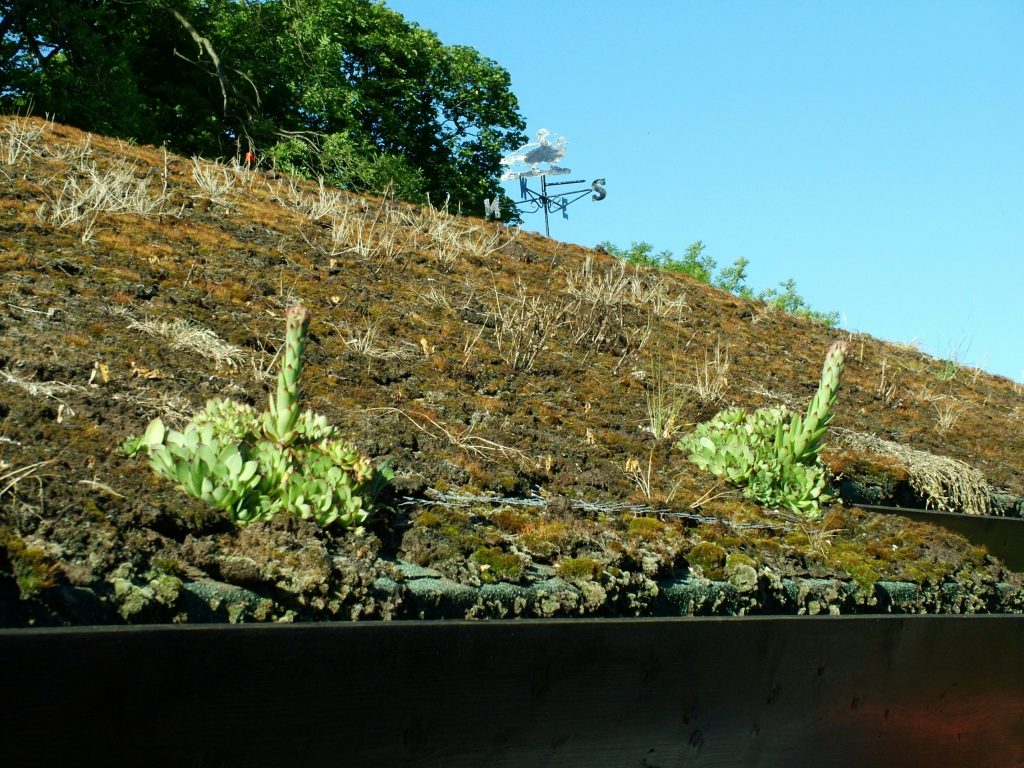Green roofing design is a sustainable and innovative approach to urban architecture that involves the installation of vegetation and greenery on the roofs of buildings. This practice has gained popularity in recent years as a way to combat the negative effects of urbanisation, such as air and water pollution, heat island effect, and loss of biodiversity. Green roofs not only provide aesthetic appeal to urban landscapes but also offer a range of environmental, economic, and social benefits.
By incorporating green roofing design into urban spaces, cities can mitigate the impact of climate change, improve air quality, reduce energy consumption, and create more liveable and resilient communities. Green roofing design encompasses a variety of techniques and systems that allow for the cultivation of plants, shrubs, and even trees on building rooftops. These systems can range from extensive green roofs, which are lightweight and low-maintenance, to intensive green roofs, which are more elaborate and require more maintenance.
The design and implementation of green roofing systems require careful consideration of factors such as building structure, climate, water management, and plant selection. As cities continue to grapple with the challenges of rapid urbanisation and climate change, green roofing design has emerged as a promising solution for creating sustainable and environmentally-friendly urban spaces.
Summary
- Green roofing design involves the use of vegetation and growing medium on a building’s roof to provide environmental and aesthetic benefits.
- Benefits of green roofing in urban spaces include improved air quality, reduced urban heat island effect, and increased biodiversity.
- Types of green roofing systems include extensive, intensive, and semi-intensive, each with different levels of maintenance and vegetation.
- Considerations for implementing green roofing in urban areas include structural capacity, waterproofing, and maintenance access.
- Case studies of successful green roofing projects showcase the positive impact of green roofs on energy efficiency and community well-being.
Benefits of Green Roofing in Urban Spaces
Mitigating the Urban Heat Island Effect
One of the most significant advantages of green roofing is its ability to mitigate the urban heat island effect. By absorbing and reflecting less heat than traditional roofing materials, green roofs help to reduce the temperature of buildings and the surrounding air, thus lowering energy consumption for cooling and improving overall comfort in urban areas.
Environmental Benefits
Additionally, green roofs can also reduce stormwater runoff by absorbing rainwater and releasing it slowly back into the atmosphere, thereby alleviating pressure on urban drainage systems and reducing the risk of flooding. Furthermore, green roofing design can significantly improve air quality in urban spaces by capturing airborne pollutants and carbon dioxide, as well as producing oxygen through photosynthesis. This not only benefits the environment but also contributes to the health and well-being of city residents.
Promoting Biodiversity and Economic Benefits
In addition, green roofs provide habitat for birds, insects, and other wildlife, thereby promoting biodiversity in urban areas. From an economic perspective, green roofing can extend the lifespan of roofing materials, reduce energy costs, increase property value, and even create new opportunities for urban agriculture or recreational spaces. Overall, the numerous benefits of green roofing make it a valuable investment for sustainable urban development.
Types of Green Roofing Systems

Green roofing systems come in various types and designs, each with its own set of characteristics and requirements. Extensive green roofs are lightweight and low-maintenance systems that typically consist of a thin layer of soil and hardy, drought-resistant plants such as sedum or grasses. These systems are well-suited for retrofitting existing buildings and are relatively cost-effective to install and maintain.
On the other hand, intensive green roofs are more elaborate and require deeper soil layers to support a wider variety of plants, including shrubs, trees, and even vegetable gardens. While intensive green roofs offer greater aesthetic and recreational potential, they also require more maintenance and structural support. Another type of green roofing system is the biodiverse or brown roof, which aims to recreate natural habitats by using locally-sourced materials and encouraging the growth of native plant species.
Biodiverse roofs provide valuable ecological benefits by supporting local wildlife and promoting biodiversity in urban areas. In addition, modular green roofing systems consist of pre-planted trays or containers that can be easily installed on existing rooftops, making them a flexible and convenient option for green roofing design. Each type of green roofing system offers unique advantages and considerations, allowing for a tailored approach to sustainable urban development.
Considerations for Implementing Green Roofing in Urban Areas
| Considerations for Implementing Green Roofing in Urban Areas |
|---|
| 1. Structural Capacity |
| 2. Waterproofing |
| 3. Drainage |
| 4. Plant Selection |
| 5. Maintenance |
| 6. Environmental Benefits |
The successful implementation of green roofing in urban areas requires careful consideration of various factors to ensure its effectiveness and longevity. Firstly, it is essential to assess the structural capacity of buildings to support the weight of green roofing systems, especially for intensive or biodiverse roofs that require deeper soil layers and larger plants. Additionally, proper waterproofing and drainage systems must be installed to prevent water leakage and ensure efficient water management on green roofs.
Moreover, the selection of suitable plant species is crucial for the success of green roofing design, taking into account factors such as local climate, sunlight exposure, and maintenance requirements. Furthermore, the integration of green roofing into urban planning and building regulations is essential to promote its widespread adoption and ensure its long-term sustainability. This may involve incentives or regulations that encourage or require the installation of green roofs on new developments or retrofitting existing buildings with green roofing systems.
In addition, community engagement and education play a vital role in raising awareness about the benefits of green roofing and fostering a culture of environmental stewardship in urban areas. By addressing these considerations, cities can effectively incorporate green roofing into their urban landscapes and reap the numerous benefits it offers for sustainable development.
Case Studies of Successful Green Roofing Projects
Several cities around the world have implemented successful green roofing projects that demonstrate the potential of this sustainable design practice in urban areas. For example, Chicago’s City Hall boasts one of the most famous green roofs in the United States, featuring over 20,000 plants across 20,000 square feet. The green roof has helped to reduce energy costs, manage stormwater runoff, and improve air quality in downtown Chicago.
In Europe, the High Line in New York City is a prime example of a successful green roof project that transformed an abandoned elevated railway into a vibrant public park with extensive greenery and recreational spaces. In Singapore, the Gardens by the Bay showcases innovative green roofing design with its iconic Supertree structures that support vertical gardens and solar panels. The project has not only enhanced the city’s skyline but also provided valuable ecosystem services such as carbon sequestration and habitat for wildlife.
Furthermore, Copenhagen’s Green Lighthouse is a pioneering example of sustainable architecture with its extensive green roof that contributes to energy efficiency and thermal comfort within the building. These case studies highlight the diverse applications and benefits of green roofing design in urban spaces, inspiring cities around the world to embrace this environmentally-friendly approach to urban development.
The Role of Green Roofing in Sustainable Urban Development

Enhancing Quality of Life
Moreover, green roofs have the potential to enhance the quality of life for city residents by providing recreational spaces, promoting mental well-being, and fostering a stronger connection to nature within urban environments.
Sustainable Development and Urban Planning
From a broader perspective, green roofing design aligns with principles of sustainable development by integrating ecological considerations into urban planning and architecture. By incorporating green roofs into building designs and city planning strategies, cities can reduce their carbon footprint, conserve natural resources, and adapt to climate change impacts.
Creating Liveable and Attractive Urban Environments
Furthermore, green roofing contributes to creating more liveable and attractive urban environments that attract investment, support local economies, and enhance social cohesion. As cities strive to achieve sustainability goals and resilience in the face of environmental challenges, green roofing design emerges as a valuable tool for shaping the future of urban development.
Future Trends in Green Roofing Design for Urban Spaces
The future of green roofing design in urban spaces holds exciting possibilities as cities embrace innovative technologies and approaches to sustainable architecture. One emerging trend is the integration of smart technologies into green roofing systems to monitor environmental performance, optimize water usage, and enhance energy efficiency. For example, sensor networks can be used to collect data on temperature, humidity, plant health, and water levels on green roofs, allowing for real-time monitoring and adaptive management.
Additionally, advancements in modular green roofing systems are expected to make it easier for building owners to install and maintain green roofs on existing structures. Furthermore, there is growing interest in incorporating edible plants and urban agriculture into green roofing design as a way to promote food security and local food production in cities. This trend aligns with the concept of multifunctional green roofs that serve not only as ecological infrastructure but also as productive spaces for growing food or supporting pollinators.
Moreover, as cities seek to enhance their resilience to climate change impacts such as extreme heat events and heavy rainfall, there is increasing emphasis on designing green roofs that can withstand extreme weather conditions while providing valuable ecosystem services. These future trends in green roofing design reflect an evolving approach to sustainable urban development that prioritizes innovation, resilience, and multifunctionality in creating greener cities for future generations. In conclusion, green roofing design offers a promising solution for creating sustainable and resilient urban spaces that address environmental challenges while enhancing the quality of life for city residents.
By harnessing the numerous benefits of green roofs such as mitigating heat island effect, managing stormwater runoff, improving air quality, promoting biodiversity, and supporting local food production, cities can embrace a more environmentally-friendly approach to urban development. As cities continue to evolve and adapt to changing environmental conditions, green roofing design will play an increasingly important role in shaping the future of urban landscapes through innovative technologies, multifunctional designs, and smart integration into building practices. With careful consideration of structural capacity, waterproofing systems, plant selection, community engagement, and policy support, cities can effectively implement green roofing design as a valuable tool for sustainable development in the 21st century.
If you’re interested in green roofing design, you may also want to check out this article on building an earth-friendly home: tips for sustainable living. It provides valuable insights on how to incorporate eco-friendly practices into the construction and design of your home, which can complement the environmentally conscious approach of green roofing.
FAQs
What is green roofing design?
Green roofing design involves the use of vegetation, soil, and other natural materials to create a sustainable and environmentally friendly roof system.
What are the benefits of green roofing design?
Some of the benefits of green roofing design include improved energy efficiency, reduction of urban heat island effect, stormwater management, improved air quality, and extended roof lifespan.
What types of vegetation are typically used in green roofing design?
Sedum, grasses, wildflowers, and other low-maintenance plants are commonly used in green roofing design due to their ability to thrive in shallow soil and harsh rooftop conditions.
What are the different types of green roofing systems?
There are two main types of green roofing systems: intensive and extensive. Intensive green roofs have deeper soil and can support a wider variety of plants, while extensive green roofs have shallower soil and are typically more lightweight and low-maintenance.
Are there any considerations to keep in mind when designing a green roof?
When designing a green roof, factors such as structural support, waterproofing, drainage, and plant selection need to be carefully considered to ensure the success and longevity of the green roof system.


